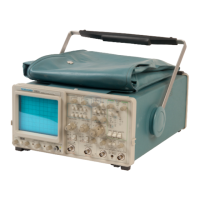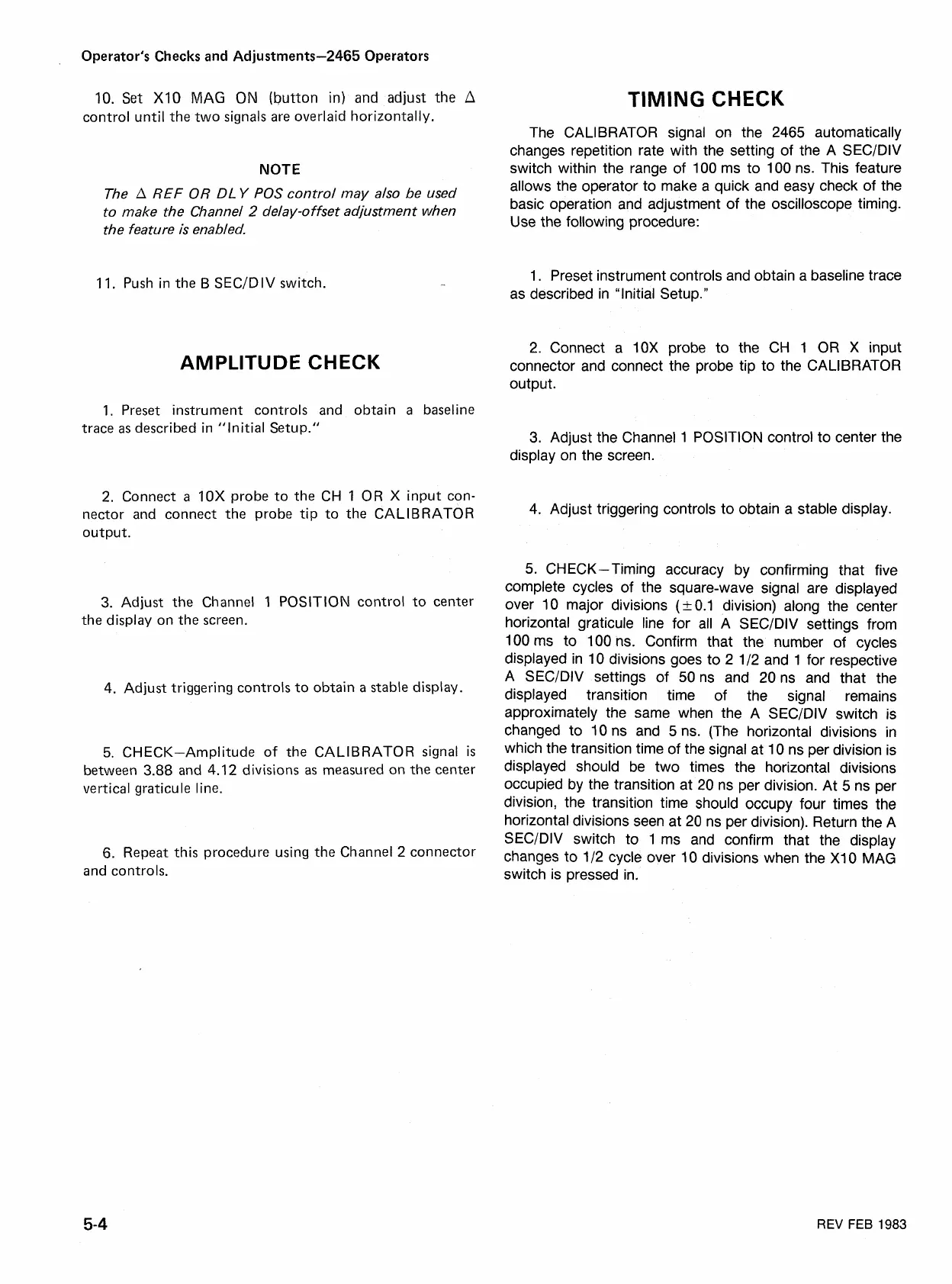Operator's Checks and Adjustments-2465 Operators
10.
Set
XI0
MAG
ON
(button in)
and
adjust
the
A
control until the two signals are overlaid horizontally.
TIMING
CHECK
The CALIBRATOR signal on the 2465 automatically
changes repetition rate with the setting of the A SECIDIV
NOTE
switch within the range of 100 ms to 100 ns. This feature
The
A
REF
OR
DL
Y
POS
control may also be used
allows the operator to make a quick and easy check of the
to make the Channel
2
dela y-o ffset adjustment when
basic operation and adjustment of the oscilloscope timing.
the feature is enabled.
Use the following procedure:
1 1. Push in the B SEC/D IV switch.
AMPLITUDE CHECK
1. Preset instrument controls and obtain a baseline trace
as described in "Initial Setup."
2. Connect a 10X probe to the CH 1 OR X input
connector and connect the probe tip to the CALIBRATOR
output.
1. Preset instrument controls and obtain
a
baseline
trace
as
described in "Initial Setup."
3.
Adjust the Channel 1 POSITION control to center the
display on the screen.
2.
Connect
a
10X probe to the CH 1 OR X input con-
nector and connect the probe tip to the CALIBRATOR
4. Adjust triggering controls to obtain a stable display.
output.
3.
Adjust the Channel 1 POSITION control to center
the display on the screen.
4.
Adjust triggering controls to obtain
a
stable display.
5.
CHECK-Amplitude of the CALI6 RAT0
R
signal
is
between
3.88
and 4.12 divisions
as
measured on the center
vertical graticule line.
6.
Repeat this procedure using the Channel
2
connector
and controls.
5.
CHECK- Timing accuracy by confirming that five
complete cycles of the square-wave signal are displayed
over 10 major divisions (k0.1 division) along the center
horizontal graticule line for all A SECIDIV settings from
100 ms to 100 ns. Confirm that the number of cycles
displayed in 10 divisions goes to
2
1 12 and
1
for respective
A SECIDIV settings of 50 ns and 20 ns and that the
displayed transition time of the signal remains
approximately the same when the A
SECIDIV switch is
changed to 10 ns and 5 ns. (The horizontal divisions in
which the transition time of the signal at 10 ns per division is
displayed should be two times the horizontal divisions
occupied by the transition at 20 ns per division. At 5 ns per
division, the transition time should occupy four times the
horizontal divisions seen at 20 ns per division). Return the A
SECIDIV switch to 1 ms and confirm that the display
changes to
112
cycle over 10 divisions when the XlO MAG
switch is pressed in.
REV
FEB
1983

